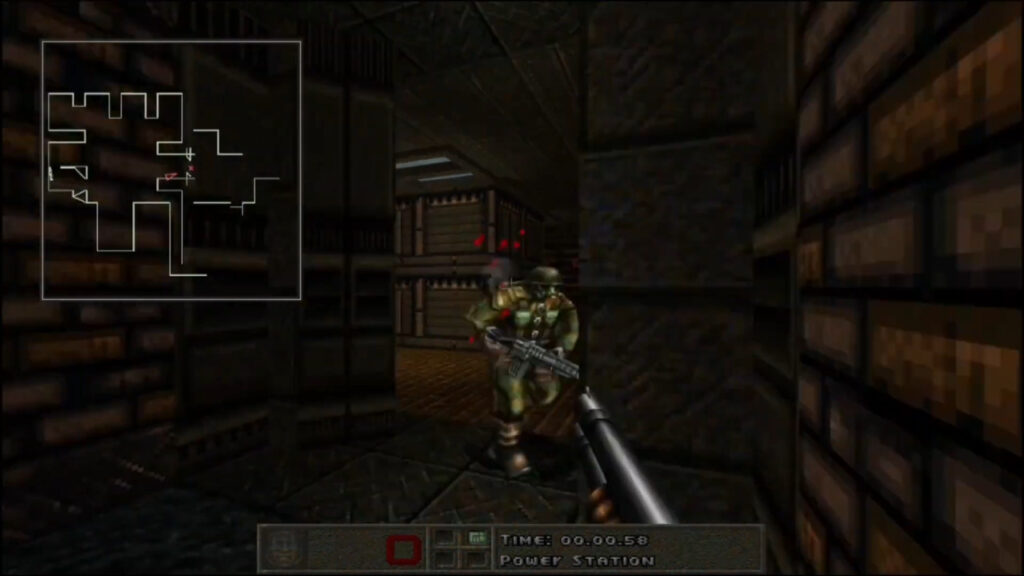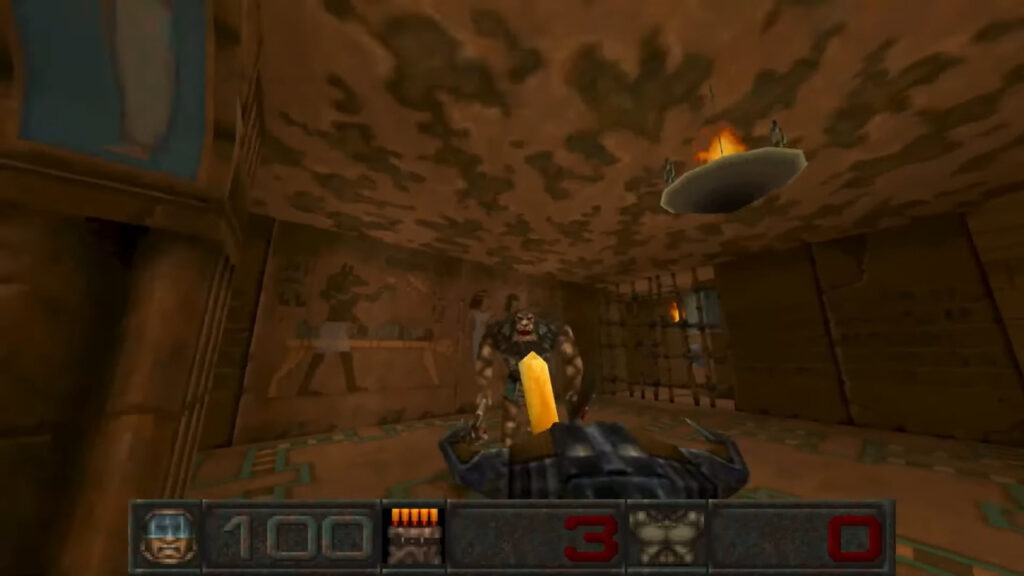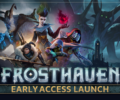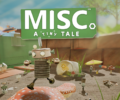
Developer: Action Forms
Publisher: SNEG
Platform: PC, Switch, PS4, PS5, Xbox One, Xbox Seris X|S
Tested on: Switch
Chasm: The Rift – Review
When looking at a game like Chasm: The Rift, it’s both unavoidable and essential to look at the game’s history first, before diving into what the game has to offer by itself. What you’re getting here is a remastered version of a semi-obscure first-person shooter from 1997. In a market dominated by Quake, Doom, and Duke Nukem, it shouldn’t come as a surprise that Chasm: The Rift didn’t leave a big cultural footprint, as it didn’t have what it takes to really compete with the aforementioned titans. This makes it all the more surprising that the game got a second lease on life. Nevertheless, we were eager to see if Ukrainian developer Action Forms’ shooter stood the test of time.
Story
It probably shouldn’t come as a surprise that there isn’t a whole lot of depth to Chasm: The Rift’s story. Most of the game’s lore is relayed to you through a lengthy monologue by your commanding officer. We couldn’t help but shake the feeling that Action Forms was simply trying to get the story out of the way so that they could focus on what mattered most. Of course, that is to get the player out there as fast as possible to start blasting away alien invaders. For completeness’ sake, we’ll still recap the premise, but rest assured that things simply boil down to pointing your weapon in the direction of your enemies and pulling the trigger. Stepping into the shoes of a soldier who the developers didn’t even bother to name, you’re tasked with dealing with an extraterrestrial species known as the Timestrikers. As their name indicates, these aliens are capable of creating rifts through time, and you’ll need to travel both to the past and to the future to stop their invasion once and for all.
Graphics
This version of Chasm: The Rift is billed as a remaster, and in practice, this means that the game’s visuals have been overhauled to run on modern hardware. Originally designed for 4:3 CRT monitors, the game is now playable in widescreen. The game still looks pleasingly pixelated too, with the new graphics striking the right balance between looking retro while accommodating modern screens, although the visuals can be somewhat muddy. The game does manage to keep up a steady and stable frame rate, but that shouldn’t be surprising given its age.
Sound
With some truly awful voice acting, a soundtrack that combines spooky ambient tracks with techno music, and decent enough sound effects for the guns and the aliens, Chasm: The Rift perfectly encapsulates what you’d expect from the soundscape of a ’90s shooter. It’s serviceable and fits the atmosphere, but ultimately, it’s as forgettable as you’d expect.
Gameplay
Apart from that visual overhaul, this is for all intents and purposes a port of that exact same game from 1997. If you’ve ever played a single-player first-person shooter from the ‘90s, then you already have a good idea of what to expect, but for the uninitiated, this means that you’ll be running around maze-like levels filled with various kinds of enemies. You have a wide variety of over-the-top guns at your disposal that have the capability to blow your assailants to kingdom come before they do the same to you. The stages are filled with weapons, ammo, health packs, and secrets to discover, and there is even some light puzzle work involved as you need to track down keycards or figure out how to unlock doors in different ways. What sets Chasm: The Rift apart from other titles from its era is the time travel component. We’ll get back to that, but let’s start with the basics.
It’s clear from the get-go that Chasm: The Rift is a product of its time, in part because of the obtuse level design. During our first playthrough, we almost got stuck on the first “puzzle”, which was a door that didn’t need a key to be opened. As it turned out, the solution was remarkably simple, as we simply needed to shoot a switch through a gap in that same door. The game didn’t point this out, and being used to more modern game design philosophies meant that we were looking for a far more elaborate solution. This is a game that is simplistic by design, and it took us a while to embrace that things here were straightforward instead of trying to outsmart the player. Of course, perhaps we should have taken the hint that a game where you have an aptly named “Blade Gun”, which shoots circular saw blades, doesn’t really require you to think.
Time travel isn’t tied to a mechanic but is instead reflected in the level design. The sixteen levels that comprise Chasm: The Rift are split across four time periods, each of which has a boss fight waiting at the end. Starting in “current-day” 1997, you’ll travel to ancient Egypt and medieval Europe before taking on the Timestrikers on their home turf in the future. This provides the game with some much-needed variety because as far as the gameplay goes, this is a by-the-numbers affair, with the exception of the god-awful boss fights. These play out more like environmental puzzles rather than point-and-shoot affairs. Beating bosses requires dumb luck in addition to trial and error and in all honesty, the boss fights drag down Chasm: The Rift as a whole.
If you’re not getting stuck on the bosses in the most frustrating way possible, playing through Chasm: The Rift is a feat that can be done in a single evening, with the game clocking in at around 4 to 5 hours. There is some replay value if you want to discover all the hidden secrets, and there are also different difficulty levels, as well as some bonus levels that can be tackled separately from the story. Even so, Chasm: The Rift feels like a very barebones package by modern-standards, so we couldn’t help but feel like the €19.99 asking price is very steep, especially since many of its direct competitors are available a lot cheaper, and those are often better games to boot.
Conclusion
A competent port of an average game; Chasm: The Rift definitely has its merits. It’s easy to see the appeal of this title, especially for fans of FPS games from the ‘90s. However, with Quake and Duke Nukem available at half the cost, it’s a bit more difficult to justify picking this one up outside of a sale. The fact that the boss battles weren’t revised to make Chasm: The Rift more enjoyable is perhaps the biggest detractor from this being a title we recommend. If you’ve played through those other titles or if you can pick this one up during a sale, then it’s worth considering picking this one up though.









No Comments